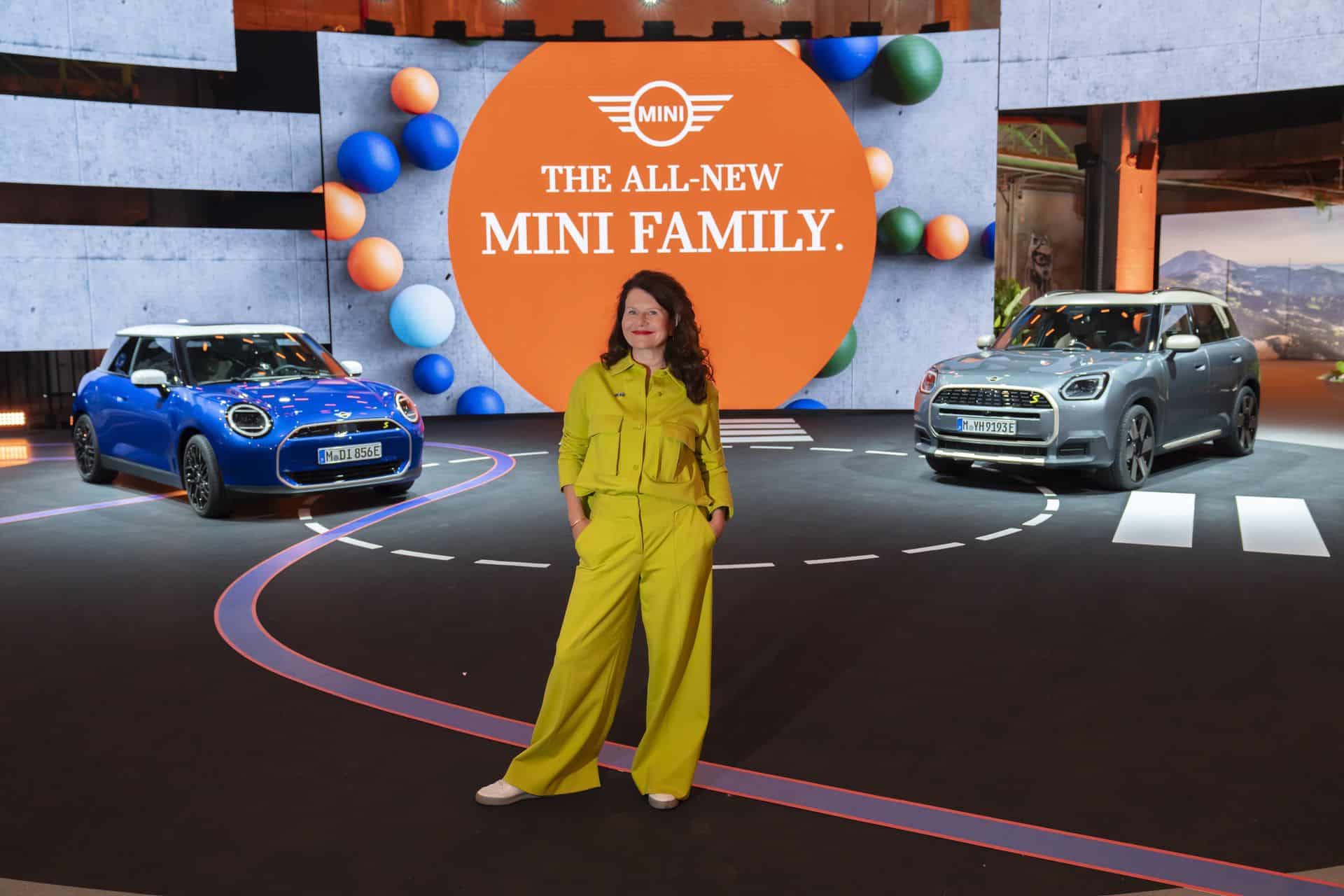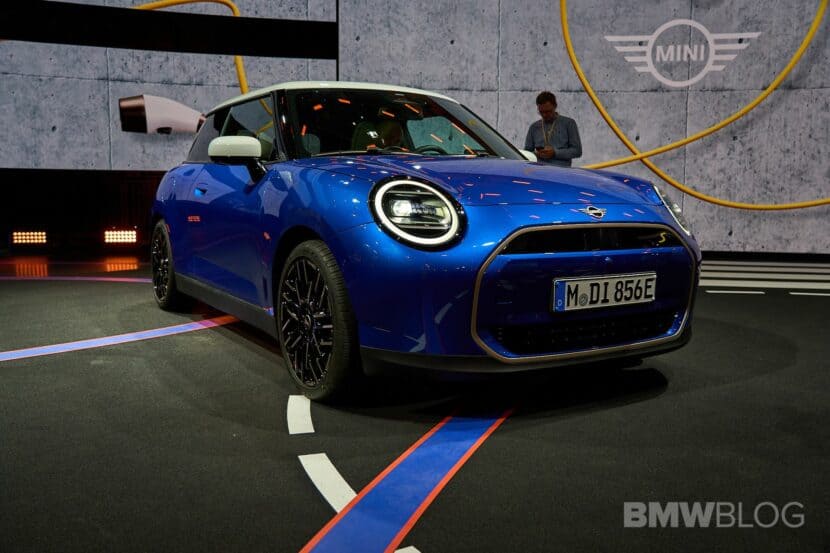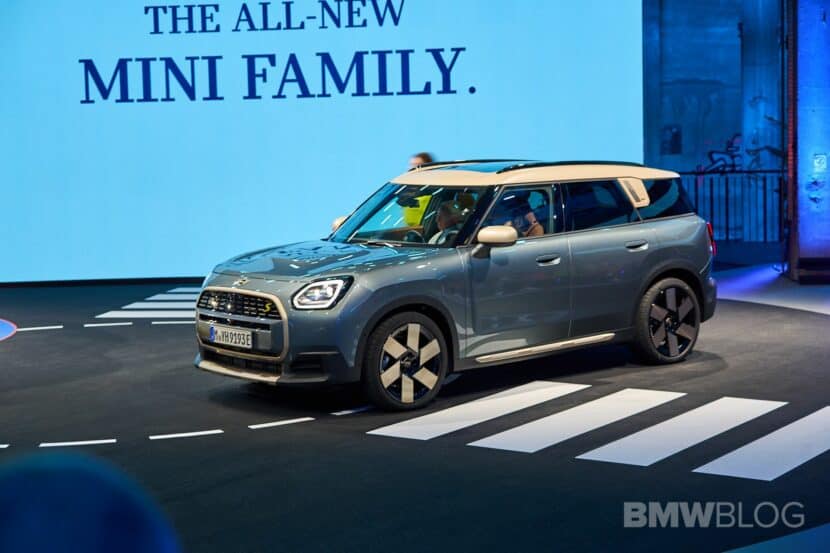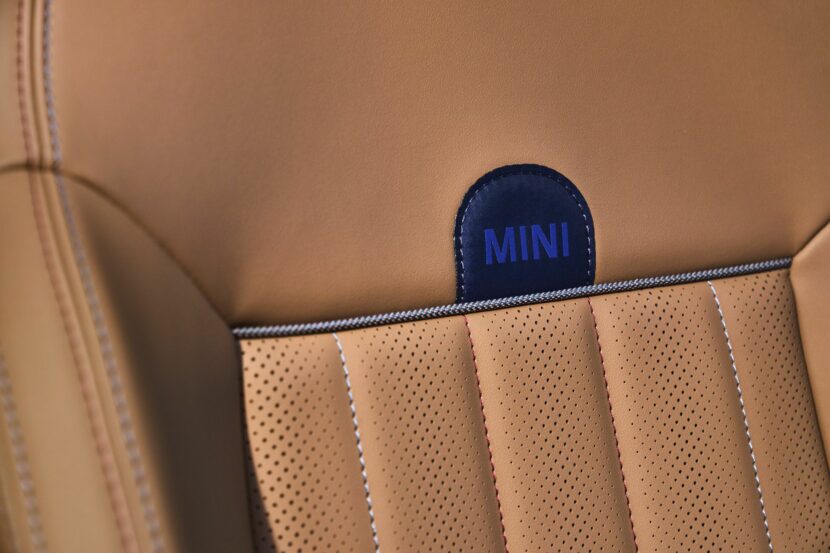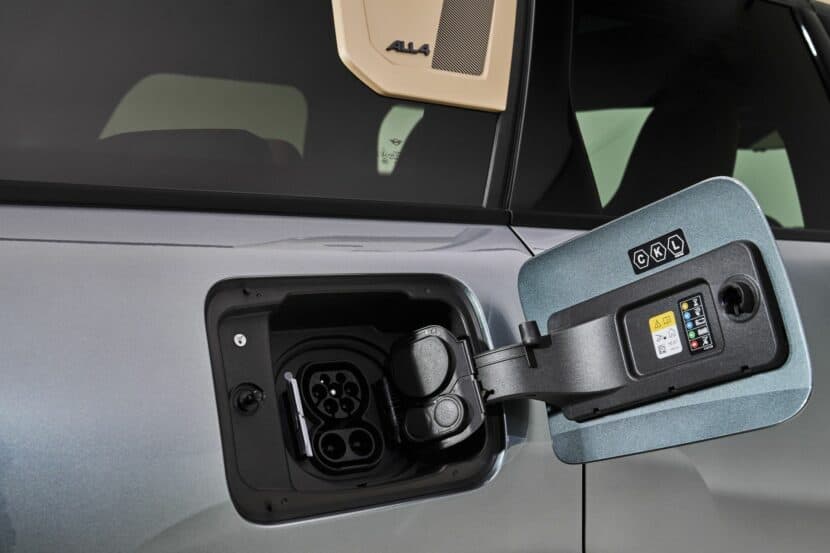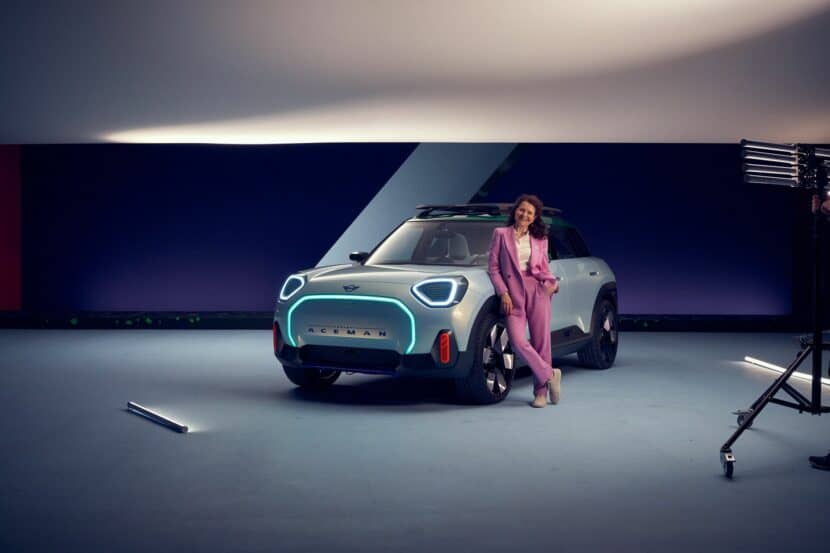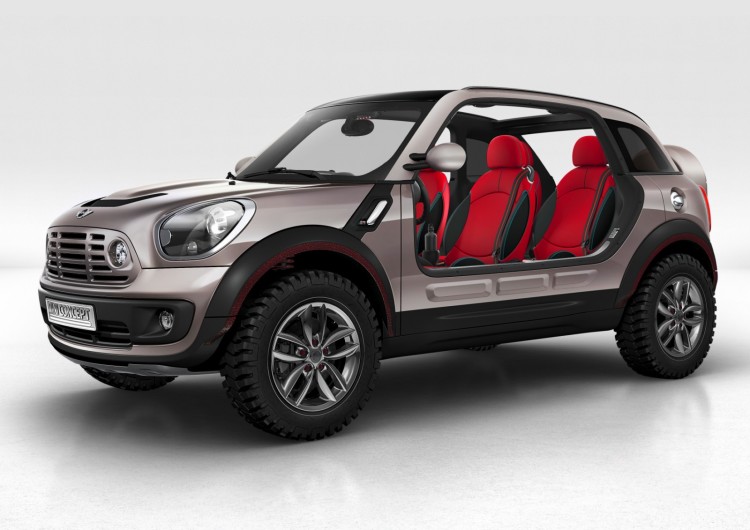MINI, the iconic British brand known for its compact and stylish automobiles, recently unveiled its latest creations, the new MINI Cooper and the new MINI Countryman, at the trendy Sugar Mountain event venue in Munich. These exciting releases mark a significant step forward for MINI as it continues to evolve in an ever-changing automotive landscape.
We had the pleasure of sitting down with Stefanie Wurst, the Head of MINI, during this exclusive event. Wurst provided insights into MINI’s vision for the future, including its global expansion and plans for the U.S. market.
MINI Cooper EV in the United States?
First order of business: Is the MINI Cooper Electric coming to the United States considering it’s currently made in China? “As you well know, there are different regulations in the US, in Canada and in the rest of the region,” Wurst said. She further added: “So I think what we have to do is to learn to cater to different regions and different sub regions since they need different strategies. So you can believe me that we are well underway of evaluating those cars for the entire region. But this is all I can disclose at this point in time.”
Can EVs in the U.S. become more affordable?
In response to this crucial question, Wurst acknowledged the complexities of the global automotive landscape. She pointed out that the world is increasingly moving towards independence from trade and navigating various regulatory challenges. In the context of the United States, she highlighted the significance of addressing protectionist measures like the Import-Export Act (IRA). Wurst noted, “And I mean speaking about the US, we cannot avoid the topic of IRA. And that’s a protectionist topic as well.”
This acknowledgment underscores the need for manufacturers like MINI to adapt to a changing trade environment while striving to offer affordable EVs. While specific strategies were not disclosed, her comments underscore the importance of navigating regulatory hurdles, achieving steady growth, and tailoring approaches to individual markets. As the automotive industry continues its transition towards electrification, addressing these challenges will be crucial for realizing the goal of affordable EVs accessible to a broader range of consumers.
MINI’s Commitment to Sustainability and Circular Initiatives
As the world grapples with pressing environmental challenges, the automotive industry is at the forefront of efforts to embrace sustainability and circularity. Wurst sheds light on the brand’s commitment to transparency and their journey toward more sustainable practice.
However, she also recognized the need to balance transparency with protecting the brand from potential legal vulnerabilities. She stated, “We have a strategy as to being as transparent as possible without being in a vulnerable position that we can be sued because we are disclosed.”
Evaluating EV Infrastructure and Adoption in the United States
Wurst starts by highlighting the success of EV adoption in the Netherlands, where BMW already achieves a 50-60% market share due to robust charging infrastructure. However, she acknowledged that the situation in the United States is distinct, with regional variations. Urban areas and communities with specific mindsets, such as Austin, Texas, have shown strong potential for EV adoption. However, this success doesn’t necessarily apply uniformly across the entire country.
The availability of charging infrastructure plays a critical role in EV adoption. Wurst pointed out that if the U.S. deploys fast charging stations in major metropolitan cities, it can significantly boost EV adoption. She noted that modern EVs have quick charging capabilities, often reaching 80% capacity in under 30 minutes, making them more practical for consumers.
MINI Aceman
MINI is also embracing this electric revolution with the introduction of the MINI Aceman. In our discussion with Wurst, we explored the global aspirations of the Aceman and how it differs from its predecessor, the MINI Paceman. Wurst affirmed that the Aceman is indeed designed as a global product, aligning with the principles and ethos of the MINI Cooper. She explained that the Aceman design caters to global appeal, with a specific focus on the electric small SUV concept.
Wurst emphasized that the Aceman is a response to specific market demands. It addresses a perceived gap in the MINI lineup, offering a five-door electric small SUV concept that adds versatility and choice for consumers. The Head of MINI pointed out that comparing the Acenma to the Paceman is not entirely accurate. While they share some similarities in body style, the Aceman positioning, utility, quality, and electric powertrain set it apart from its predecessor.
Any exciting projects in the future?
Wurst expressed her enthusiasm for the future of MINI, highlighting that they are in the process of launching exciting new vehicles. But what truly excites her is what comes next. While MINI is preparing to launch new vehicles, Wurst is more focused on what comes after these launches. She envisions a future where MINI continues to innovate and evolve as a brand.
Wurst emphasized that innovation is not limited to vehicle design. MINI has dedicated innovation departments within their research and development (R&D) teams, where they are working on cutting-edge projects. She even mentioned that her cousin is part of one such team, highlighting the personal connection to innovation within the brand.
We brought up the MINI Beachcomber Concept, a concept car from MINI’s history known for its adventurous and open-air design. Wurst’s response reflected the brand’s ethos of embracing innovation and sustainability. She acknowledged that MINI has a history of exploring bold and creative concepts and suggested that some of these concepts might become relevant again, especially within the context of sustainability. She expressed enthusiasm for new materials and reducing environmental impact, showcasing MINI’s commitment to pushing the boundaries of automotive design while keeping an eye on sustainability.
MINI’s Role in the Future of Urban Mobility and Smart Cities
Stefanie Wurst acknowledged the changing dynamics of urban mobility and the increasing importance of sustainability. She highlighted MINI’s potential to be a key player in this transformation and emphasized the need for open-mindedness and forward thinking. Wurst recognized that MINI has traditionally excelled as a city car, well-suited to urban environments. However, she believes that MINI can play a significant role in the future of urban mobility, especially as cities evolve and embrace new forms of transportation.
Wurst mentioned her previous involvement in an initiative with the city of Rotterdam, highlighting that some cities are already quite advanced in their approach to urban mobility. This collaboration between MINI and smart cities is crucial for shaping the future of urban design and transportation.
Furthermore, the MINI boss emphasized the importance of being open-minded and forward-thinking within the BMW Group, which owns MINI. She acknowledged that regulations related to urban mobility are evolving at a different pace and sometimes with different logic. MINI’s ability to adapt to these changing regulations will be key to its success in urban areas of the future.


